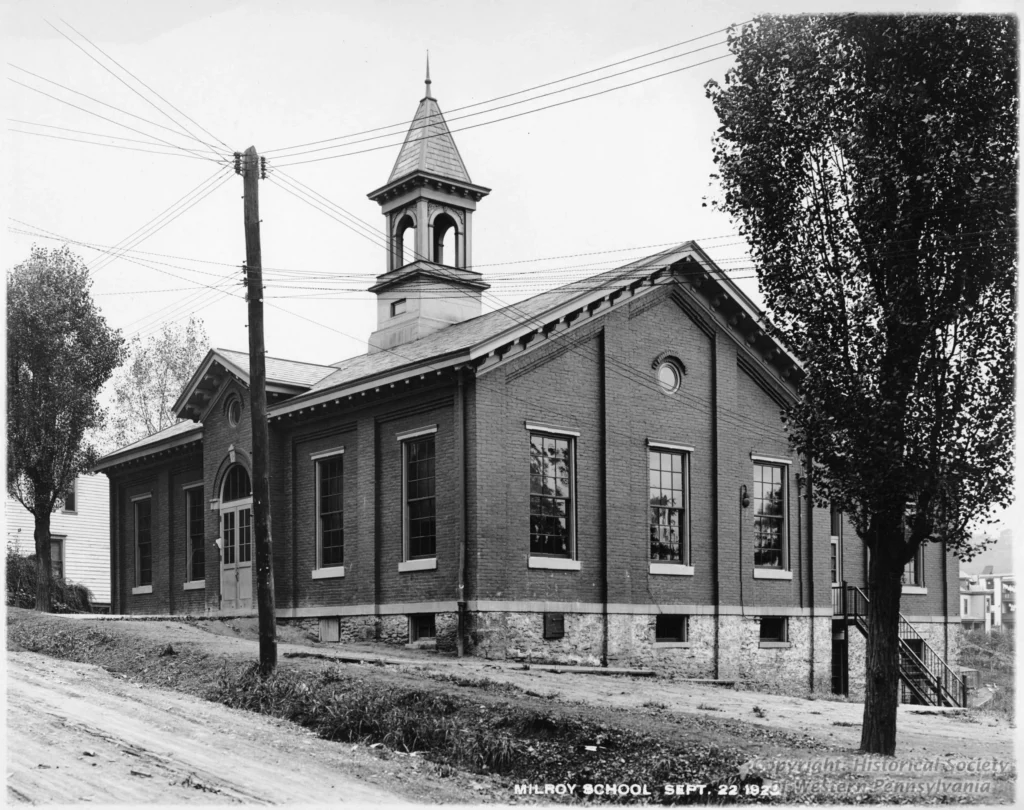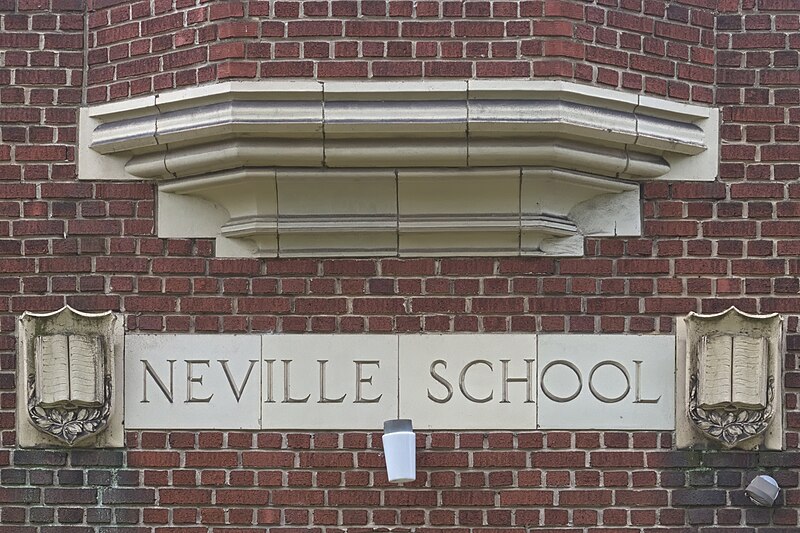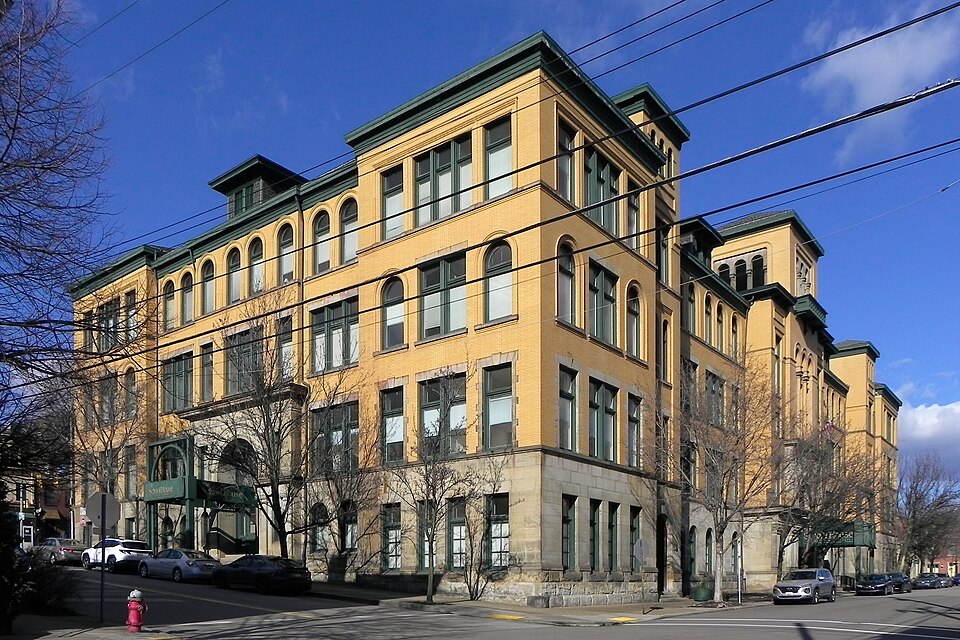
Designed by Frederick Sauer, this school was called the Latimer School after Allegheny was conquered by Pittsburgh. It was built in 1898.
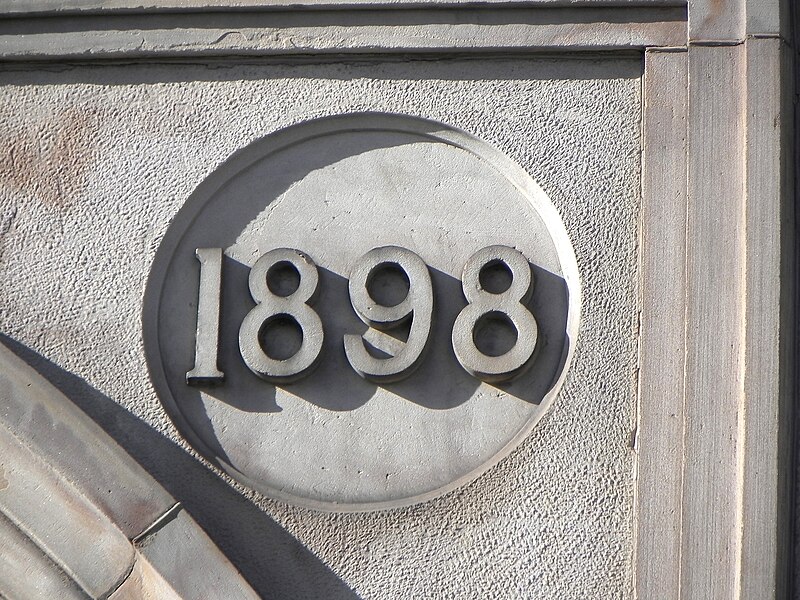
In the 1980s it was converted to apartments under the name “The School House.” As far as old Pa Pitt knows, this was the first major conversion of a disused school to apartments in the city, and it showed that the idea was viable.
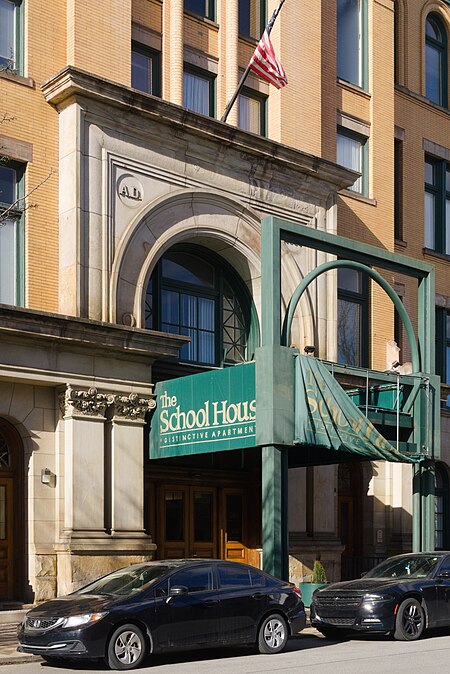
The school was converted to apartments in the age of Postmodernism, and the designer of this canopy cleverly made it a kind of abstracted projection of the original entrance. Father Pitt caught the fabric part of the canopy on a bad hair day.
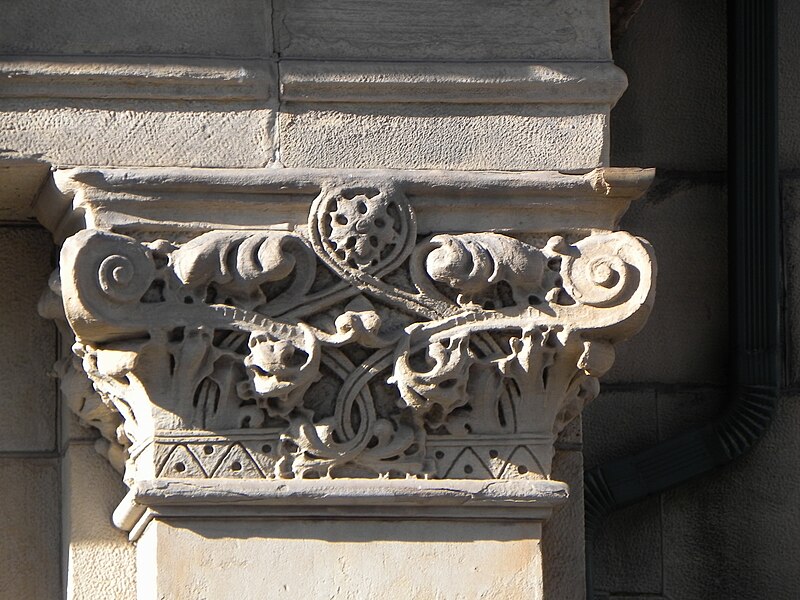

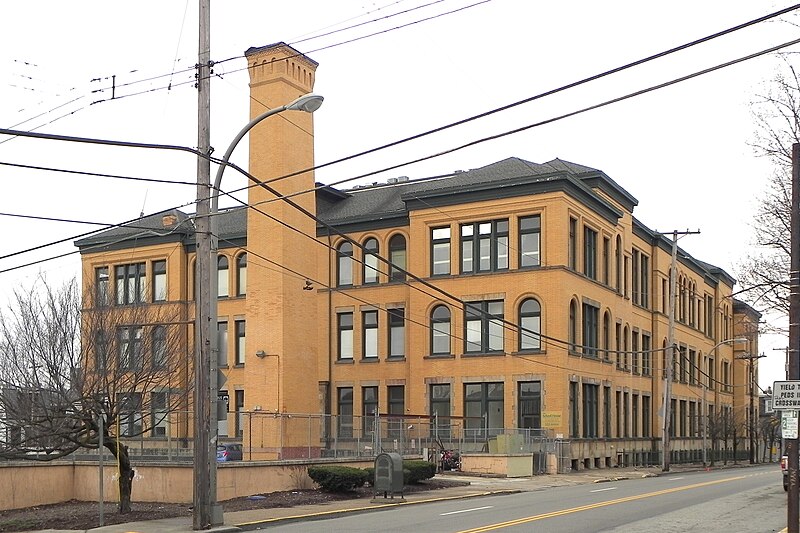
The North Avenue side.
Map.
Comments

























